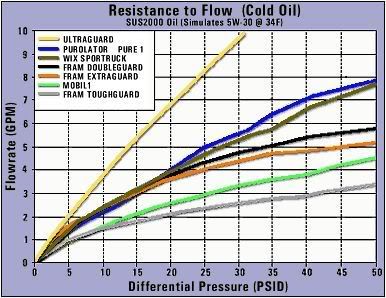Originally Posted By: Gary Allan
Quote:
AND IF the filter is every going to go into bypass mode with that oil viscosity at the point in time, then it will go into bypass mode before the pump goes into bypass mode, or possibly right at the point of relief.
...but I recall DISTINCTLY you saying that the two mechanisms have nothing to do with each other. Go back and look.
..are you saying that you were in error ..or ...perhaps ..you've gone home and gotten rid of the death sticks and rethought your life
The pump's relief valve operates independently of the filter's bypass valve, and vica-versa ... that's what I mean.
Now, it's true that IF you modified the oil pump's relief valve so it kept the pump's output pressure to say 125 psi max instead of say the original setting of 80 psi max ... THEN it's possible that mod could cause the filter to now go into bypass mode when it originally didn't when hit with 80 psi. Do you know why? - because of increased flow volume and increased filter PSID due to higher pressure (125 vs 80 psi) on the fixed resistance filter/engine flow path. And if the filter did go into bypass with the higher relief pressure of 125 psi (and particular viscosity), then it would do it at some point
before or right at the time the pump goes into relief mode. Again, if the filter didn't go into bypass mode with a max regulated pressure of 125 psi, then it would never go into bypass with that viscosity of oil, on that particular engine at any RPM between idle and redline. You would have to increase the flow even more to get an even larger PSID to get the bypass valve to operate. Get the pattern?
Originally Posted By: Gary Allan
Quote:
Of course, I'm not talking about crazy pressure/volume surges going on, or pump relief valves that are messed up or designed incorrectly so the pump's output pressure isn't controlled well.
You're the only one I've ever heard mention those things. I can't for the life of me think of where you have observed such things. Then again, I don't think you've ever observed any of this at all, correct?
Those are just special "qualifications" for your benefit ... just so there is no confusion, grasshopper.





